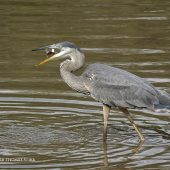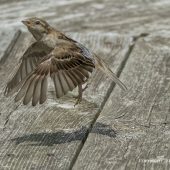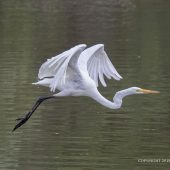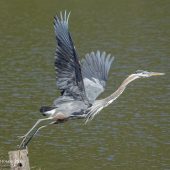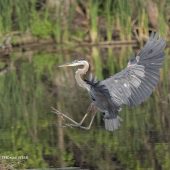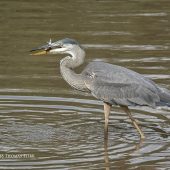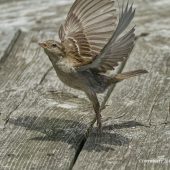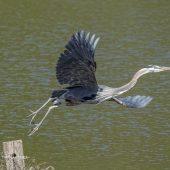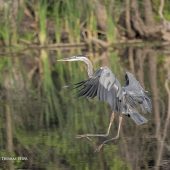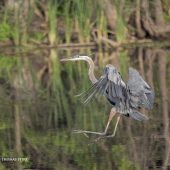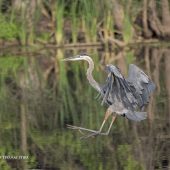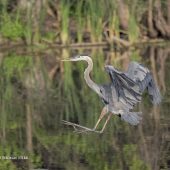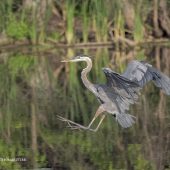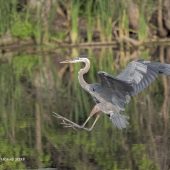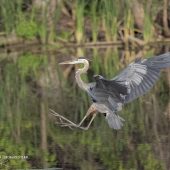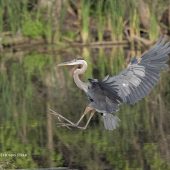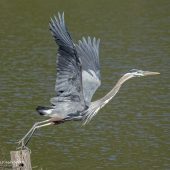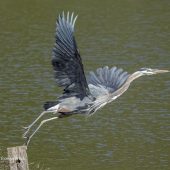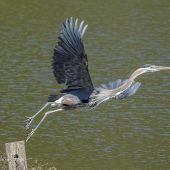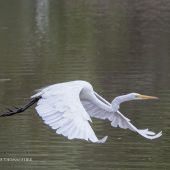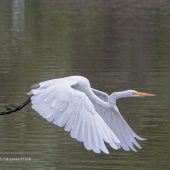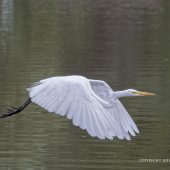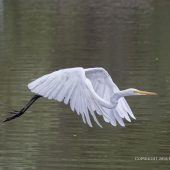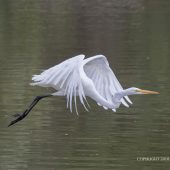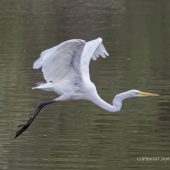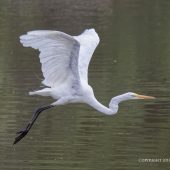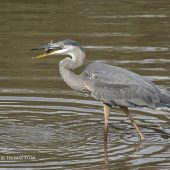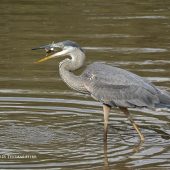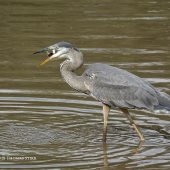Photographing birds in flight at 60 frames-per-second By Thomas Stirr (website | eBooks, check out also his previous NR posts):
The objective of this article is to illustrate the additional differentiation in bird motion that can be captured when shooting still images at 60 frames per second.
While the now discontinued Nikon 1 system with its small 1” CX sensor was challenged with dynamic range, colour depth and low light performance, it was capable of some very fast frame rates. When shooting in continuous auto-focus, various Nikon 1 bodies could shoot at 15 frames per second, or at 10 or 20 frames per second in full resolution, depending on the model.
Nikon 1 bodies can also shoot at either 30 or 60 frames per second in full resolution. There is a notable restriction. At these very fast frame rates, the first photograph in a run locks focus for all of the frames that follow it. There are specific situations when bird photographers would use these very fast frame rates. These include birds taking off, landing, or flying at a 90-dgree angle to the photographer.
The first example is a series of 9 consecutive images of a great blue heron landing, captured at 60 frames per second. These 9 images would have been captured in less than 1/6th of a second. For those of you interested in EXIF data the photographs were captured with a Nikon 1 V3 with a 1 Nikon CX 70-300 mm f/4.5-5.6 zoom at a focal length of 300 mm (efov 810 mm), f/5.6, 1/1600, ISO-800.
Our next example is of a great blue heron taking off. Noting the foot position of the bird will give you a good idea of how photographing birds in flight at 60 frames per second allows for more precise motion captures. These five images would have been captured in 1/12th of a second. A Nikon 1 V3 was used along with a 1 Nikon CX 70-300 mm f/4.5-5.6 zoom using a focal length of 198 mm (efov 535 mm), f/5.6, 1/1600, ISO-500.
Our third example is of an egret flying, captured at 60 frames per second. The best use of this fast frame rate is when a subject bird is flying at 90-degrees to the photographer. Obviously if a bird is moving towards or away from the camera its motion may take it out of focus during an image run. These nine images would have been captured in less than 1/6th of a second. These images were captured with a Nikon 1 V3 along with a 1 Nikon CX 70-300 mm f/4.5-5.6 zoom using a focal length of 178 mm (efov 481 mm), f/5.6, 1/1250, ISO-1000.
Our final example image run, consisting of a series of five consecutive photographs, is of a great blue heron fishing. In this series you’ll see how shooting at a very fast frame rate allows a photographer to choose between incremental differences in the position of the fish in the bird’s mouth. These five images would have been captured in 1/12th of a second. A Nikon 1 V3 was used with a 1 Nikon CX 70-300 mm f/4.5-5.6 zoom using a focal length of 192 mm (efov 518 mm), f/5.6, 1/1600, ISO-560.
The 40-image buffer in my Nikon 1 V-Series bodies (V2 and V3) fills in only 2/3 of a second when shooting at 60 frames per second. This makes the shutter release timing more challenging than when shooting in continuous auto focus at 10, 15 or 20 frames per second.
There are certainly many specifications to consider when looking at a new camera. Checking out all of the frame rates available with the new Nikon full frame mirrorless cameras is something that bird photographers may specifically want to do.
Technical Note:
All photographs in this article were captured hand-held using Nikon 1 V3 equipped with a 1 Nikon CX 70-300 mm f/4.5-5.6 zoom lens as noted in the article. All images were produced from RAW files using my standard process of DxO PhotoLab, CS6 and the Nik Collection.
Article and all images are Copyright 2018 Thomas Stirr. All rights reserved. No use, duplication or adaptation of any kind is allowed without written consent. Nikon Rumors is the only approved user of this article. If you see it reproduced anywhere else it is an unauthorized and illegal use. Posting comments on offending websites and calling out individuals who steal intellectual property is always appreciated!
If you have an interesting idea for a guest post, you can contact me here.
